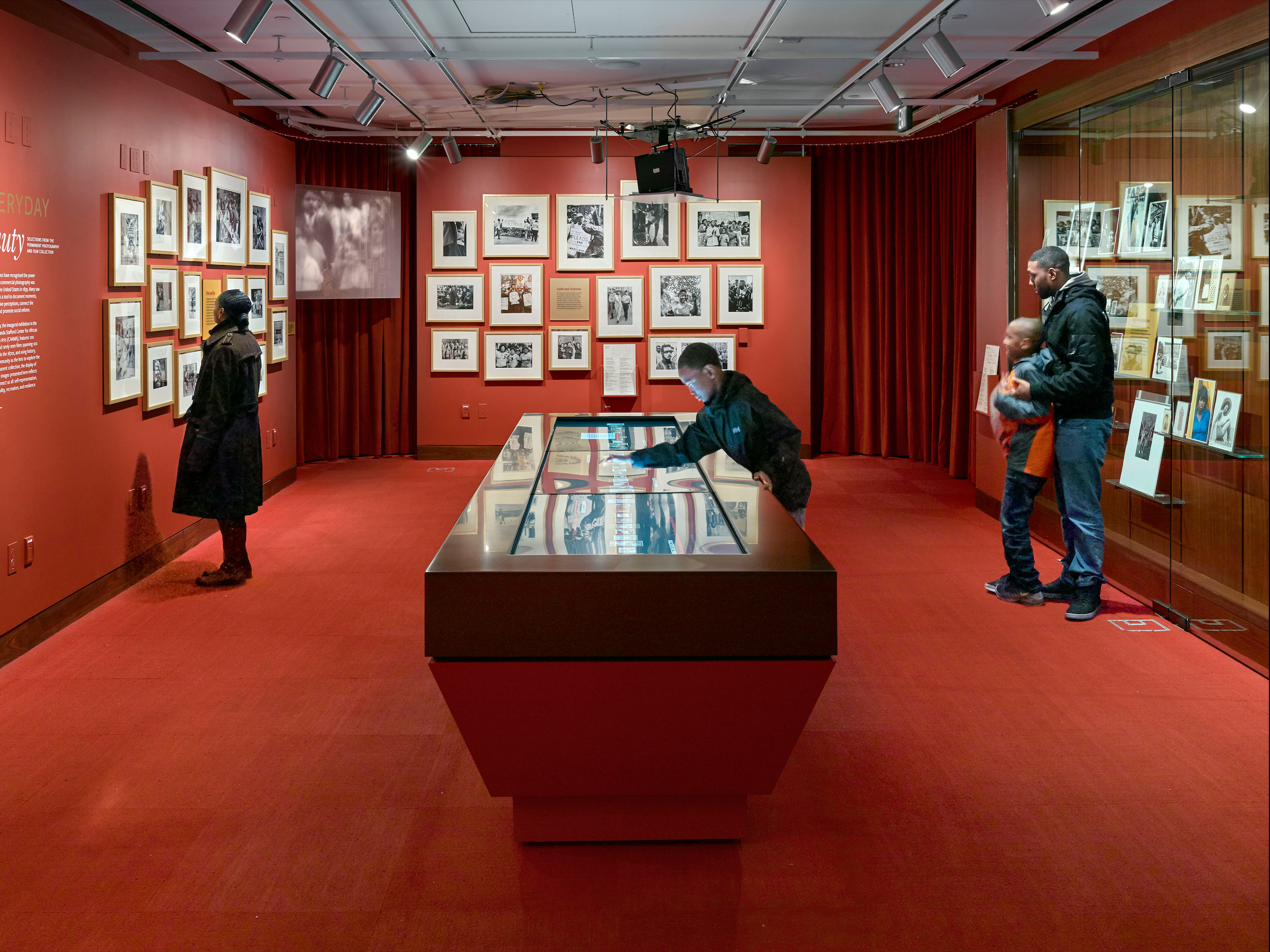Press Release
From the Basketball Court to the Supreme Court: Sports, Black History, and Remembering with Damion Thomas
As museums work through the process of re-negotiating their relationship to their authority, Damion Thomas believes they must step away from the comfort of “see[ing] themselves as… interested, but unengaged participants” in history. His own professional trajectory serves as a useful, concrete reference for the powerful results that can be achieved when intellectual rigor is balanced with fun and impassioned enthusiasm.
Thomas never set out to be a curator but found his entry into the world of cultural institutions after writing his Phd dissertation on “the role of sports in the African American struggle for greater rights and freedoms,” against his advisor’s judgment. There are rarely job openings for sports historians, yet Thomas found his own niche after the Smithsonian reached out to him for consultation on how to incorporate sports in the museum galleries.

Sports Exhibit, Photo Credit AlanKarchmer, Courtesy of NMAAAHC
Four years after this exchange, he was invited to be the curator of their new sports gallery. Thomas’ unique trajectory also informs his approach to exhibition design. He wanted to do justice to the social importance of the exhibition contents without “tak[ing] the love of sports out of the gallery.” Thomas struck this balance of fun and seriousness by using a solemn color palette for the space but offering video content produced in partnership with engaging ESPN personalities that are immediately recognizable to sports fans. Sometimes, the best curatorial decisions are the most obvious and intuitive, at least when it comes to music selection: “If I’m not popping my head, we don’t have the right music.”
For museums, as authoritative institutions, it often makes more sense to relate exhibition material to current events thematically rather than building out an entirely new show. Thomas mentioned how his curatorial work might intersect with the Black Lives Matter movement, for example: “maybe we can’t put together an exhibition directly related to Black Lives Matter, but what we can do is talk about the history of protest in the African American struggle… there’s a way for you to work with your existing collection to help people frame and understand the ongoing contemporary issues… Certainly, you can get hot takes if you just go to Twitter and people are always talking about what’s going on in the streets. I think the ability to step back and to look at a larger picture, a larger trajectory, I think is what we do best. We can also do that fairly quickly.”

Photo by Alan Karchmer; Courtesy of NMAAAHC
This conception of the institution as an active participant and leader in wider societal conversations clearly informed its membership campaign. Inspired by Antiques Roadshow, the museum staff travelled the country teaching people how to preserve their family artifacts in a mutually beneficial endeavor to share institutional knowledge.
Smithsonian membership is modestly priced at $25 annually, but the large volume of members (about a quarter of a million) speaks to the immediate relevance of the institution. Given that The Smithsonian is partially congressionally funded, their wide member base is not only a promising sign in terms of audience engagement, but also in terms of institutional sustainability. This is a vital lesson for cultural institutions everywhere– when you go out of your way to provide engaging content and sharing expert knowledge with the public, people notice and reciprocate the love.

Everyday Beauty, Photo Credit AlanKarchmer, Courtesy of NMAAAHC
Speakers:
Damion L. Thomas, PhD, Sports Curator, Smithsonian National Museum of African American History and Culture
David van der Leer, Principal, DVDL
Damion Thomas is the museum curator of sports for the Smithsonian National Museum of African American History and Culture. He earned a Ph.D. in United States history at UCLA. Prior to joining the museum, he was an assistant professor at the University of Maryland—College Park and the University of Illinois—Urbana/Champaign, where he taught courses that focused on sports in United States history, sports and U.S. race relations, and sports and black masculinity. He is the author of Globetrotting: African American Athletes and Cold War Politics.
Hosted by AIANY/DVDL, Sponsored by Microsol Resources
